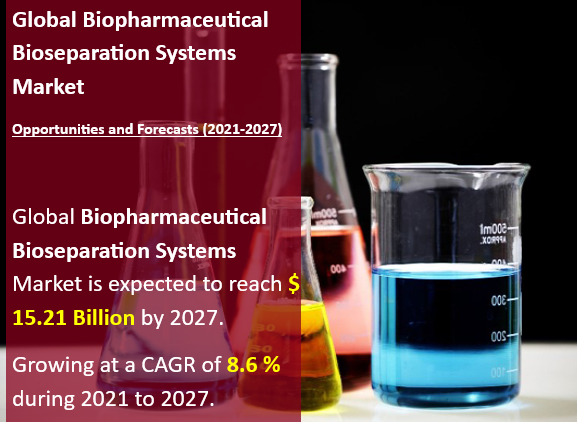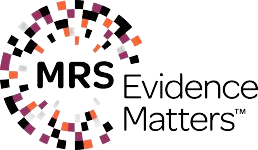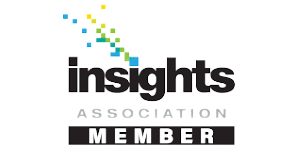Global Biopharmaceutical Bioseparation Systems Market – Overview
The report will cover the overall analysis and insights in relation to the size and growth rate of the “Global Biopharmaceutical Bioseparation Systems Market” by various segments at a global and regional level for the 2014-2027 period, with 2014-2019 as historical data, 2020 as a base year, 2021 as an estimated year and 2021-2027 as forecast period.
COVID 19 Impacts on Biopharmaceutical Bioseparation Systems
COVID-19 is a new strain of coronavirus that has not been previously identified in humans . Coronaviruses (CoV) are a family of RNA (ribonucleic acid) viruses. COVID-19 started in Asia and is now spreading over the rest of the world via person-to-person contact and community spread. COVID-19 pandemic may have an potential impacts on Global Biopharmaceutical Bioseparation Systems Market.

Global Biopharmaceutical Bioseparation Systems Market – Introduction
- Bioseparation refers to the practice of purification and separation of biological products. Biological agents like biological membranes, enzymes and plants are used for large-scale purification of biological products based on engineering and scientific principles. Depending upon the various characteristics, such as volatility, solubility, density, size, electrostatic charge, diffusivity, shape, polarity, and electrostatic charge, the biological products are separated as well as purified using a bioseparation technique. Increasing demand for biological pharmaceuticals, emergence of new biologics such as vaccines and monoclonal antibodies, and advent of biosimilars or generic biological drugs are driving the production of these drugs, in turn driving the demand for bioseparation systems used in their manufacturing.
- Bioprocessing represents an expensive, complex and time-consuming step in the production of biopharmaceutical drugs. Designing downstream processing presents significant challenges, as characterizing the identity and structure as well as measuring targeted components is innately difficult. Development of biological drugs takes several years leaving limited time on market for these drugs to gain returns on investments. Consequently, there is a growing emphasis on evolution of technologies in this area to reduce expenses and make them more efficient.
Global Biopharmaceutical Bioseparation Systems Market Report Scope
- The scope of the report covers the clear understanding and overview of the product.
- Analysis of market trends in the region, with market data considering 2020 as the base year, 2021 as the estimate year and forecast for 2027 with projection of CAGR from 2021 to 2027.
- The report covers discussion of economic trends and technology.
- Market estimates represent revenue.
- In-depth analysis of the market segmentation assists in determining the prevailing market scope.
| Attribute | Details |
|---|---|
| Market size available for years | 2014–2027 |
| Base year considered | 2020 |
| Forecast period | 2021–2027 |
| Historical period | 2014-2019 |
| Forecast units | Value (USD) & Volume (Million Units) |
| Forecast units | Value (USD) & Volume (Million Units) |
| Segmentation | By Regions North America, Europe, Asia Pacific, Latin America and Middle East & Africa |
| By Countries United States, Russia, China, Germany, United Kingdom, France, Japan, Israel, Saudi Arabia, South Korea, United Arab Emirates, Canada, Indonesia, Malaysia, Switzerland, Australia, India, Italy, Sweden, Spain, Belgium, Netherlands, Norway, Brazil, Argentina, Mexico, South Africa and 54 Others. |
|
| By Type Chromatography, Membranes/filters, Centrifuges and Other. |
|
| By Application Biopharmaceutical, Biolab and Others. |
|
| Companies covered | 3M Purification Inc.; Agilent Technologies, Inc.; Alfa Wassermann Separation Technologies LLC; Asahi Kasei Corporation; Bio-Rad Laboratories; Danaher Corporation; Flottweg Separation Technology; GE Healthcare Life Sciences; GEA Westfalia Separator Group GmbH; KNAUER Wissenschaftliche Geräte GmbH; Konik Nanobiotech SL; Merck KGaA; Pall Corporation; ProMetic Life Sciences Inc.; Repligen Corp.; Sartorius Stedim Biotech; Thermo Fischer Scientific Inc.; Tosoh Bioscience Inc.; Waters Corporation; YMC Europe GMBH and Others. |

Segments Covered in Global Biopharmaceutical Bioseparation Systems Market
- The global biopharmaceutical bioseparation systems market can be segmented based on technique and region. In terms of technique, the biopharmaceutical bioseparation systems market can be divided into chromatography technique, membrane-based bioseparation, centrifugation technology, cell disruption technology, precipitation, extraction technique, and filtration technologies. Based on region, the global biopharmaceutical bioseparation systems market can be segmented into North America, Latin America, Europe, Asia Pacific, and Middle East & Africa. North America is projected to be the most lucrative market for biopharmaceutical bioseparation systems during the forecast period due to high production capabilities and high per capita health care expenditure. Launch of new, innovative products and an expanding skill base in North America implies that more people in the region will have access to powerful technology during the forecast period.
- The biopharmaceutical bioseparation systems market in the region is well-developed as compared to others. Hence, replacement of products is expected to drive the biopharmaceutical bioseparation systems market during the forecast period. Additionally, evolving research and development in dynamic fields such as genomics, pharmaceutical sciences, and biotechnology would necessitate higher investments by end-users for equipment to cater to the rising research and analysis needs. Moreover, consumer preference for automation will lead to increase in demand for automated bioseparation systems that handle multiple samples with high degree of accuracy rendered by automation. The U.S. and Europe are the most attractive markets for biopharmaceutical bioseparation systems. This is attributed to these regions being in the forefront of medicinal export and import, with many key biopharmaceutical companies located in these regions. High adoption of novel treatment options and rapidly growing population leading to rising expenditure on healthcare market in the Asia Pacific region makes it one of the most lucrative markets for biopharmaceutical bioseparation systems. Rise in income levels in emerging markets such as India and China has increased health care spending. Moreover, changing lifestyles and increase in urbanization in these countries have led to a gradual escalation in the incidence of lifestyle related diseases such as cancer, diabetes, and heart disease. This has opened up multiple avenues for expansion in the bio-pharmaceutical sector to conduct research and allocate substantial budget for the same.
Key Market Players in Global Biopharmaceutical Bioseparation Systems Market
- The major players in the Global Biopharmaceutical Bioseparation Systems Market are 3M Purification Inc.; Agilent Technologies, Inc.; Alfa Wassermann Separation Technologies LLC; Flottweg Separation Technology; GE Healthcare Life Sciences; GEA Westfalia Separator Group GmbH; KNAUER Wissenschaftliche Geräte GmbH; Konik Nanobiotech SL; Merck KGaA; Pall Corporation; ProMetic Life Sciences Inc.; Repligen Corp.; Sartorius Stedim Biotech; Thermo Fischer Scientific Inc.; Tosoh Bioscience Inc.; YMC Europe GMBH and others.
- Also, the Global Biopharmaceutical Bioseparation Systems Market analysis report includes information on upcoming trends and challenges that will influence market growth. This is to help companies strategize and leverage all forthcoming growth opportunities.
Objectives of the Global Biopharmaceutical Bioseparation Systems Market study
- To provide detailed information regarding drivers, restraints, opportunities and challenges are influencing the growth in the Global Biopharmaceutical Bioseparation Systems Market.
- To analyze the competitive intelligence of players based on company profiles and their key growth strategies.
- To strategically analyze micro markets with respect to the individual growth trends, their prospects, and their contribution to the total Global Biopharmaceutical Bioseparation Systems Market.
- To analyze competitive developments such as expansions, and product launches, along with research & development (R&D) activities undertaken in the Global Biopharmaceutical Bioseparation Systems Market.
- A unique model is created customized for each study also offers suggestions that help enterprises to identify and mitigate risks.
Note
- Global Industry Reports will also support you post-purchase for a period of 6 months to answer any of your queries related to the following market and to provide you any more data if you need, for your analysis.
- Also, you can buy some selected Chapters from the report.









